FILE. According to official science, there are more benefits to be vaccinated that & rsquo; s not & rsquo; be, both individually and on a collective level. As for side effects, more or less admitted, we are asked to believe that & rsquo; they are much lower than those of the diseases the vaccines protect us.
But the contribution of vaccines to public health is really a fact validated by solid studies ? Is it not rather an idea "received", conveyed by our media, and that would have alienated us d & rsquo; a different perspective: vaccines have nothing to do with disease eradication ! C & rsquo; is that & rsquo; says, Many arguments in & rsquo; support, the last book of Michel Georget, « The contribution of vaccination to public health », released in April 2014, but also the book " Dissolving Illusion », published in July 2013 US. [Dossier paru dans New Health n°37, Septembre 2014]
You can download this file in PDF appeared at Néo Santé with bonus ITW by Michel Georget
>>> "Should I have my child vaccinated ? » For many parents, the issue of vaccination has become a real dilemma. Between the medical discourse, often reassuring face to the side effects, and that & rsquo; they can read on the internet about the danger adjuvants, they find themselves caught in a vise. D & rsquo; one side, parents can not s & rsquo; help thinking that if their child is a serious post-vaccination accident, they want in their lifetime ; but the & rsquo; other side, the doctor tells them : "If you do not vaccinate your child, you take the risk that & rsquo; he died d & rsquo; a serious illness, and the more you contribute to circulating viruses or bacteria in the population ". Hello guilt !
Suddenly, Some parents try a middle way… "We would only make them mandatory vaccines", Do they ask their GP… But, They often collect a look more or less disapproving, the doctor often pressuring these parents, probably also encouraged by some "bonuses" to vaccination1…
To help the doctor to convince parents to become increasingly wary, health authorities publish booklets specially designed "to the attention of health professionals"2. For example, the measles-mumps-rubella vaccine, reads : "The risk of complications after the vaccine are less severe than those of the diseases the vaccine protects". More, "Measles is a highly contagious disease that requires very high coverage (at least 95 % for both doses) to stop the circulation of the virus ".
Actually, irrespective of the proposed vaccine, l & rsquo; pitch our authorities often based on two major assertions. First : any vaccine will eradicate the disease it protects, as has been the case for the other diseases in the past ; deuzio : if there are side effects, those vaccines are less risky and less severe than the disease it protects.
But two recent books are precisely undermining both arguments, pillars of vaccination policies for decades : Dissolving Illusions, appeared in the US in July 2013, recalls & rsquo; history of vaccination. The two authors examine the famous benefit of vaccinations in Western populations. "I wanted to share a healthy process of disillusionment about vaccination", says Roman Bystrianik, co-author Dissolving Illusions. After years of personal research, he therefore wrote this book with Suzanne Humphies, a doctor who turned his back on after vaccination 19 years in hospital practice and careful consideration. This work is to be compared with L & rsquo; providing vaccinations to public health, published in France in April 2014, in the writings of Michel Georget, which must already several books on the subject.
The findings of these two books, that s & rsquo; based on solid references, is final : not only vaccines n & rsquo; d never allowed & rsquo; eradicate diseases, but again it n & rsquo; no evidence of their profits both in health matters that & rsquo; economic. In other words : vaccination is of no utility ! While many illnesses disappeared in developed countries say, this is due simply to… raising the standard of living ! Explanations.
Il and 150 years only…
A Room 1900. Inspection of an unhealthy home in New York, without light or ventilation. Source : Wikicommons, U.S. National Archives and Records Administration (public domain).
In the first part of Dissolving Illusions, the two authors present a little rosy picture of the recent past in developed countries. A past that we have too quickly forgotten. « Many of us cultivate a romantic image of the nineteenth century », the authors explain. As a matter of fact, Boston, Chicago, New-York, Paris, rather you have to imagine entire neighborhoods where cattle, stray dogs, horses, rats, alongside men in conditions of & rsquo; unsanitary, quite close to those of Third World countries…
In the nineteenth century, many infectious diseases are so prevalent worldwide. Especially in big cities, with & rsquo; s arrival & rsquo; industrial era, undergo a massive and sudden intake of population. then piles up in a hurry workers in slums and makeshift dwellings.
Throughout this century, l & rsquo; s explosion & rsquo; s urbanization & rsquo; performed in a completely anarchic and uncontrolled, resulting in overcrowding and accumulation of human waste and… animals ! And in all major cities of the Western world. For the record, in 1750, only 15% of the population lived in cities. To 1880, while the urban rate is near 80% ! The largest city in the Western world, London, included in 800 000 inhabitants in 1801. On the death of Queen Victoria, in 1901, London hosts 7 million people (8 million aujourd & rsquo; hui), but without the appropriate infrastructure we currently enjoy…
Crowding and poverty contribute to maintain the disease in industrialized countries. « During the Victorian era, l & rsquo; average age of death for the urban poor were 16 years in England », say the authors Dissolving Illusions. Result, a truly fear of the "poor", vector many infections, s & rsquo; installs in affluent populations are not spared by these diseases.
Western Slum. Here d & rsquo view, a poor neighborhood in Chicago, in 1901. Source : Dissolving Illusions. « Tenement Conditions in Chicago—Report by the Investigating Committee of the City Homes Association, 1901, p. 133 ».
Industrial subdivision in New York 1925. L & rsquo; access to housing worthy of the name would s & rsquo; not built in a day for the working classes. Source : Wikicommons, cliché de Thomas Andrew Jackson (Rearview of a New York tenement), public domain.
Paris, the city of 85 000 sumps…
In France the situation is not rosier : « At the beginning of the 19th century, Parisian butchers felled livestock for consumption, in "killing" adjacent to vices (shopping) or established in their immediate vicinity. The capital stood at some 150 Specific killing and 500 butchery vices », recalls Elisabeth Philipp in History Review of the railway "3. Not only the conditions d & rsquo; hygiene are deplorable, but food is also often contaminated with infectious agents : Meat, milk, vegetables, and of course & rsquo; water…
A Paris, waste treatment is a problem throughout the nineteenth century, with lots of empty sumps where Parisians refuse and sewage, and also needs… These wastes contaminate wells and fountains where people s & rsquo; & rsquo supply up; in 1870. "Paris was the city of 85 000 pits & rsquo; ease. Many are still in use after World War ", accurate Dissolving Illusions. In English, "Cesspool" is "cesspoll", a word that gave its name to typhoid fever : « cesspool fever ». At that time, din the main towns of the western world, some neighborhoods are worthy slums of the current Third World, rats swarm…
Prime rats. 50$ for the one who will bring the greatest number of dead rats ! Poster of 1916, Boston, where 2 million rats endanger lives, cleanliness and prosperity of the city. Source : Dissolving Illusions, « The Women’s Municipal League of Boston Bulletin, flight. VIII, do not. 2, January 1917, p. 25 ».
working conditions close to the & rsquo; slavery
The work, this is health, it-on ! Not in the nineteenth century anyway… L & rsquo; explosive urbanization goes hand in hand with a profound change in the structure of work, without any limitation of & rsquo; human exploitation by the capitalist bosses. Child labor ruin their life expectancy. "Extremely stressful working conditions are growing old working class. Those who escape death or disease in & rsquo; children do not exceed the thirties or forties. The first pictures, in 1830, show workers already seemed old despite their thirty or forty years, as they suffer from poor nutrition, diseases, and are burdened with the job ", recalls Dissolving Illusions.

Child labor. In a US plant, in 1908, a small spinner in & rsquo; factory Mollohan, Newberry, South Carolina (US). Source : Lewis W. Hine for the National Child Labor Committee, public domain.
L & rsquo; era of major epidemics
Measles, scarlatine, smallpox, diphtheria and whooping cough : these five diseases are common in & rsquo; time, especially in children. They contribute to a high mortality rate among younger. But the nineteenth century, c & rsquo; is also the time of the great epidemics, the same that still plague currently in underdeveloped countries say : typhoid fever4, typhus5, dysentery6 and even yellow fever7. In 1855, The New York Times describes for example & rsquo; invasion of mosquitoes potentially vectors of yellow fever, in Norfolk, Gosport and Portsmouth, Virginia. The newspaper described as a film & rsquo; d & Horror clouds rsquo; flying insects around coffins8…
Cholera, in the form of epidemic waves, also rampant throughout this century. In 1832 for example, this acute intestinal infection caused by ingestion of water or food contaminated is a plague in France : this year, the fact cholera 120 000 dead9, Carnage ! Between 1832 and 1860, some 150 000 Americans die also. Epidemic 1852-1854 London kills 10 000 people. In 1866, a new epidemic wave in the United States carries a 50 000 patients in a year…

Large outbreaks of cholera in the world. The first began in 1816, the last s & rsquo; completed in 1926. They touched every continent. Today, Cholera has been raging since 1961, in developing countries only. Source : Dissolving Illusions.
Improved & rsquo; hygiene and… disappearance of epidemics !
In France, aujourd & rsquo; hui, only a few cases of cholera are counted each year ; in most cases, the disease was contracted to & rsquo; abroad. Why this illness she suddenly disappeared in Western countries ?
Progressively, from the mid-nineteenth century, throughout the twentieth century, living conditions s & rsquo; improve in Europe and the United States. By dint of seeing deaths s & rsquo; build up in the poor neighborhoods of large cities, awareness emerges about the & rsquo; hygiene. This is called "health revolution". This awareness s & rsquo; & rsquo accompanied; regulatory beginning. For example, Great Britain, in years 1850 and 1860, is implementing a public health service, which has the power to regulate & rsquo; sanitation, l & rsquo; water supply, environmental pollution, l & rsquo; accreditation of doctors or child labor.
With the & rsquo; improved working conditions and the & rsquo; habitat, with better access to basic health care, contagious diseases of the century to regress as the standard of living increases, well before the & rsquo; advent of antibiotics. Cholera is thus naturally dammed, without the & rsquo; using the first cholera vaccine (happens in years 1990) ! Thus, this vaccine whose’Efficiency is further challenged (it n & rsquo; is not recommended by the & rsquo; WHO), has never had the slightest impact on mortality in Europe and the US ; only the & rsquo; improving conditions & rsquo; hygiene has undoubtedly helped the disappearance of the disease in developed countries.
What applies to us yesterday, will it not be today for the countries of the Third World ? Is it not in vain and illusory to stop this disease with a vaccine without addressing the real causes of the problem : low immunity of undernourished populations, unhealthy living conditions, l & rsquo; ingestion & rsquo; non-potable water.
"Numerous evidence clearly demonstrates that the improvement of living conditions, s & rsquo; power, obstetric care – and other non-vaccine causes, allowed the decline of mortality rate from infectious diseases. Despite these obvious, proponents of vaccination continue to falsely claim that c & rsquo; thanks to vaccines that our life expectancy has increased, s & rsquo; indignant authors Dissolving Illusions. L & rsquo; WHO should it rather change its policy in developing countries, mirror of our past ? »
For the record, the lack of drinking water and sanitation is the second cause of infant mortality in the world. 80 % diseases in underdeveloped countries say are related to water. They cause annually 1,7 million deaths10. The deficit of water and sanitation has significant costs in terms of mortality, morbidity and overall health - and therefore in terms of health expenditure -, in terms of time and energy available for education and economic activity. According to the UNDP and WHO, these costs would average 2,6 % of GDP in developing countries (170 billion), and 5 % of the GDP of sub-Saharan Africa.
30 billion, c & rsquo; is the price of & rsquo; universal access to & rsquo; water, but also the number d & rsquo; affair global vaccine market…
These figures should be related to the estimated cost of universal access to water and sanitation based on low-cost technologies : about 30 billion according & rsquo; WHO11. But also with the figures of the global vaccine market : 30 billion dollars in 201412 ! This figure also represents a drop of water for the pharmaceutical industry because vaccines represent only 3 % of the drug market ! C & rsquo; s words & rsquo; it would be possible to end the problem of & rsquo; access to & rsquo; drinking water in the world… But we prefer the promotion of vaccines in & rsquo; effectiveness and & rsquo; questionable safety, rather than put in place a health policy that would easily and sustainably reduce most related diseases & rsquo; water in developing countries.
"The idea of improving the health of African populations, and more generally that of developing countries is of course generous, but the vaccinations that & rsquo; they are offered (and often requires) are they the best way to achieve this ? We can already strongly doubt their interest in our developed countries, what about the benefit that & rsquo; they can bring to the undernourished, lack of safe water and basic sanitation ? », writes Michel Georget, in his book L & rsquo; providing vaccinations to public health.
Incidence and regression of the disease, some graphics to understand
MEASLES. In 1983, even as the & rsquo; were encouraged to vaccination, the Daily doctor wrote: "Many GPs who have not had the opportunity to see one severe measles throughout their careers". Extract L & rsquo; providing vaccinations to public health.
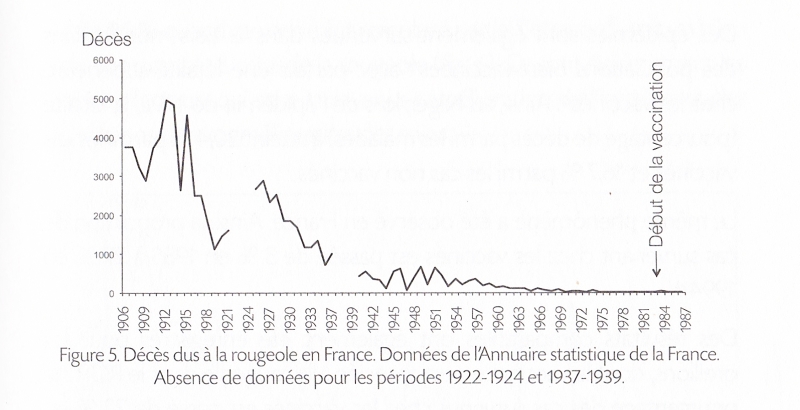
Source Michel Georget, L & rsquo; Contribution of vaccinations to public health. And. Dangles.
TUBERCULOSIS. Comparison with the Netherlands who has never practiced mass vaccination against BCG. Both countries had mortality rates similar tuberculosis at the end of World War II ; 25 years after, Holland had virtually eliminated with tuberculosis mortality rate (1,2) seven times lower than that of France (8,2) where vaccination became mandatory 1950. Extract L & rsquo; providing vaccinations to public health.
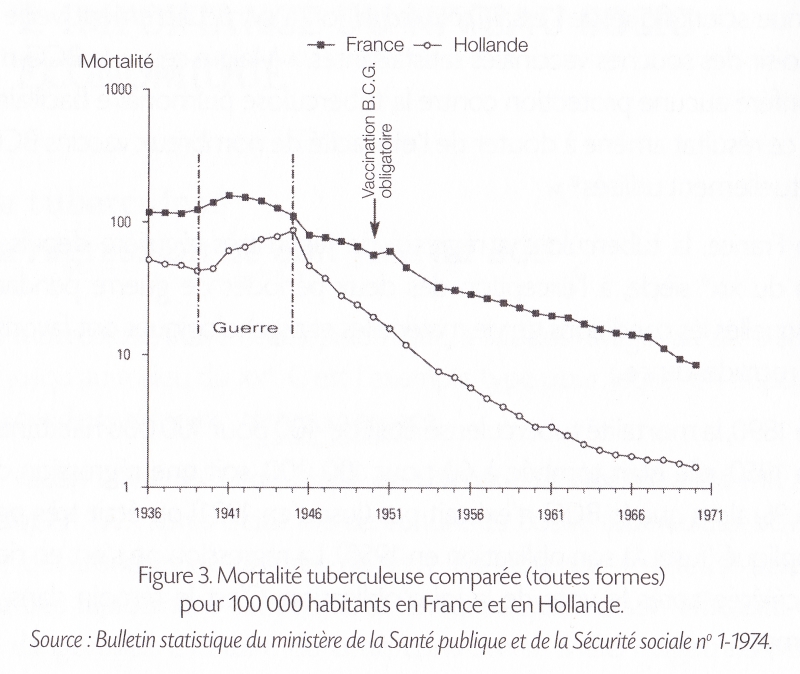
Source Michel Georget, L & rsquo; Contribution of vaccinations to public health. And. Dangles.
COQUELUCHE. Compared to the early twentieth century, mortality of pertussis decreased by 92 % when vaccines were introduced. As measles, these are the same factors that influenced : improvement & rsquo; hygiene, living conditions, and care. Extract L & rsquo; providing vaccinations to public health.
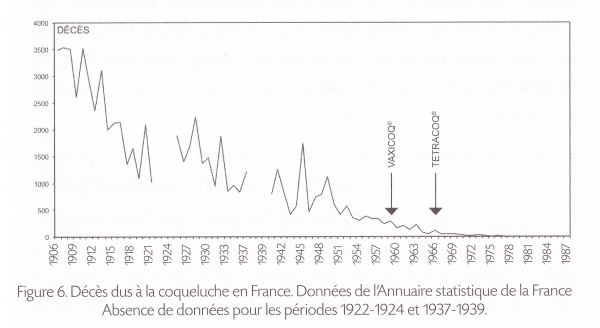
Source Michel Georget, L & rsquo; Contribution of vaccinations to public health. And. Dangles.
When the risk and cost of the vaccination are higher than those of the disease…
Michel Georget, Associate Biology, also author of Vaccinations, unwanted truths, s & rsquo; interested in risk-benefit ratios and cost-benefit of our vaccination policies. According to him : vaccinations cost us dearly, too expensive, both in health (Side effects) that & rsquo; in terms of public finances. Michel Georget case by case each vaccine : Diphtheria, tetanus, polio, measles, oreillon, rubella, hépatite B, infection of the cervix & rsquo; uterus, etc.. In the end, no vaccine is d & rsquo; benefits in his eyes… Examples :
The meningitis. Regularly, Media alert us to cases that appear in France… They then take turns insistently vaccination campaigns against meningococcal meningitis. But Michel Georget, these sanitary measures should be considered with caution. "In 2008, l & rsquo; incidence of invasive meningococcal C, corrected for underreporting (c & rsquo; ie including the fact that only 1% to 10% of cases are reported, ed), was estimated at about 0,26/100 000. International Drug (Vaccine, ed) reports, to 2009, 2,1 serious accidents 100 000 (vaccinated, ed). So a child is eight times more likely to have a serious accident as a result of vaccination than to contract meningitis C. And, as in the cases reported d & rsquo; infection, we correct underreporting, the risk is between 80 and 800 times larger. Two perils, Did not have to choose the lesser ? »
L’hépatite B : « A very revealing study of the cost of vaccination policy was conducted by researchers at the & rsquo; Inserm13 . (…) For the general population, vaccine policy costs twenty times more expensive than the treatment of hepatitis that would have occurred in the absence of vaccination ; it still costs five times as much for men 15 to 40 years. Vaccination n & rsquo; that is profitable for drug addicts. The balance would be even more negative if researchers do s & rsquo; were placed in much more favorable conditions that & rsquo; they actually are. Thus, they considered effective vaccination 95 % while there has 15 % non-responders (Non-response increases with & rsquo; age, smoking and & rsquo; obesity). Otherwise, epidemiological data used for the calculations were taken into account in the medical literature, about 60 000 new cases per year. Actually c & rsquo; is about 15 times less14. Finally, the cost of treatment of the many side effects n & rsquo; has not taken into account, No because we & rsquo; not yet know the & rsquo; scale when the & rsquo; study was published (1995, start of the vaccination campaign, ed) ».
The vaccin anti-HPV (papillomavirus, responsible & rsquo; s cervical infection & rsquo; uterus) : "Professor Beraud15 calculated the number of women that & rsquo; need to be vaccinated to prevent one cancer of the neck of & rsquo; uterus linked to HPV 16 and 18. If the vaccine protects all life with an efficiency of 95 %, this number is 324, but passes 9 080 and, as c & rsquo; likely, protection decreases only 3 % annually. Currently, each of the three injections needed costs about 160 € (vaccine + medical examination) ; it will be necessary to spend more than 4 million & rsquo; euros to prevent cervical cancer ONE of & rsquo; uterus. Again, the calculation does not take into account the treatment of numerous and very serious side effects. The benefit to public health may therefore d & rsquo; be zero, even negative, since women should continue, as is recommended, to be followed on the gynecological… »
In previous record achieved for Neo Health 32 (March 2014), I was interested to side effects of the HPV vaccine : in studies of Gardasil, provided by the laboratory16, there triggering autoimmune diseases 2,4 % vaccinated (unsurprisingly, these include autoimmune diseases 2,5 % of the cohort that received the pseudo-placebo, that is to say, only the adjuvant). It is three hundred times more than rates known in the general population ! But that n & rsquo; d not prevent the labs & rsquo; s & have rsquo; marketing authorization.
And seasonal flu ? « An extensive study was conducted by the Primary Fund Nantes health insurance during the weeks 47 to 50 of 1993 Health spending 31 757 non-vaccinated and 8 381 vaccinated, all aged 60 to 69 years17. This study shows that influenza vaccination costs us for a little convincing result. En effet, health expenditure (Medical and Pharmaceutical) of vaccinees were 30 % higher than those of non-vaccinated, additional costs which must be added the cost of the vaccine and all for a poor result : 14 % vaccinated presented against a flu-like illness 13 % Non-vaccinated… » The benefit of the vaccination it comes not only to laboratories, “Sponsored” social security through, which reimburses through taxpayers contributions ?
The whooping cough. The High Council for Public Health issued in March 2014, on its website, a new notice on the vaccination strategy against pertussis in the & rsquo; adult18. L & rsquo; atmosphere vaccination for all. "The health authorities and the pharmaceutical industry have imagined to extend to adults, including future young parents, the pertussis vaccination reminders to d & rsquo; avoid contamination of infants before that & rsquo; they are vaccinated. This so-called strategy of "cocooning" was set up by the French medical authorities, American and Australian. Unfortunately, a group of Canadian researchers from the Medical Faculty of & rsquo; Laval University (Quebec) showed, March 2012, that it does not work19. To prevent hospitalization, admission to intensive care and death, should be vaccinated respectively 10 000, 100 000 and 1 million people. Each admission avoided cost 200 000 $… The researchers concluded that parental vaccination program would require a lot of resources and would not be effective in preventing the complications of pertussis in young children… »
A blank check to vaccination
Multiple aberrations vaccine policies were widely described by Michel Georget in L & rsquo; providing vaccinations to public health. How is it that & rsquo; a simple researcher arrives to decipher these inconsistencies while health authorities, and their attendant d & rsquo; experts, do not succeed ? Just because "For decades, it keeps us in the illusion that vaccination will defeat cost disease ". C & rsquo; is an assumption, deeply rooted. It leads to this kind of incoherent :
"Although the total cost of a national immunization program has never been encrypted, there is no doubt that & rsquo; such a program is the & rsquo; usable and most effective available instrument in preventive medicine. An analysis of cost / benefit of each vaccination against preventable disease should help convince health administrators and policy makers of the importance of a national program ", wrote the Ministry of Health in its Weekly Epidemiological Bulletin (1990, n ° 42).
Michel Georget notes : "How can you write that vaccination is, in terms cost / benefit, the best instrument of Preventive Medicine, while the cost of a national program has never been evaluated ? » This falls d & rsquo; deep amateurism of the experts, steeped in their certainties in & rsquo; against supposed benefits of vaccination.
The danger of mass campaigns
Vaccinations are costly to the wallet, but also to human health : in addition to the underreported side effects, mass vaccination campaigns can lead to displacement of & rsquo; age of childhood illnesses and modification of & rsquo; ecological balance of viral or bacterial strains. In the case of measles e.g., "Coverage now extends to nearly 90 %, thehe wild virus circulates much less and natural reminders are no longer made. Result : l & rsquo; s vaccination immunity & rsquo; being unconscious after fifteen or twenty years, Measles is now seen in adults, among women of childbearing age who do not pass more protection to their infants, which are exposed to measles in & rsquo; a few months old. Or, the lethality of the disease is four times higher among infants less than & rsquo; one year, and 8 times higher in people over 25 year old.
The most regrettable, c & rsquo; is that it had been predicted 1950 already, well before & rsquo; arrival of the vaccine against measles, by WHO experts : "If a vaccine is discovered, its use should be limited, unless that & rsquo; it is proved that & rsquo; it confers the & rsquo; immunity for life to the very limited price risks. A method ensuring immunity of a few years would have the effect of delaying the & rsquo; disease onset until & rsquo; to & rsquo; adulthood where it has a more serious character (while c & rsquo; is in the second childhood that & rsquo; it presents the least risk) »20.
Bad science
Besides the & rsquo; amateurism mentioned above, we can also talk about bad science when & rsquo; we look in detail how are manufactured and tested vaccines. Bad science, or bad science, dishonest means a scientific approach for abusing the credulity of the people. This term is generally used against alternative medicine, while conventional medicine itself as "good science"… Or, in the case of vaccines, it violates scientists recognized as basic rules for : not true placebos, absence of & rsquo; carcinogenicity study, genotoxicity and mutagenicity, absence of & rsquo; pharmacokinetic study (to study the fate d & rsquo; a substance in & rsquo; body), follow too short and small staff, placing on the market too fast.
With vaccines, the bad science s & rsquo; also turns dirty (« sale », « impure », "Infected") : contamination of vaccine produced by bacteria, viruses, cell culture residue, is a real problem, known but little publicized.
"The main potential risks associated with the use of biologicals produced in continuous cell lines (especially for polio vaccines, anti-rotavirus, Hepatitis B, ed), fall into three categories : Heterogeneous contaminating DNA, virus and transforming proteins (c & rsquo; ie capable of cancerous cells, ed) », says WHO in a report21 dating 1987, on & rsquo; extent of risks associated with the & rsquo; use of cell cultures in the preparation of vaccines.
The poor for guinea pigs
Chapter dirty science, there is also clinical trials that go beyond ethical limits, on behalf of the common good. Michel Georget reminds us that, from the beginning, vaccination was tainted with the blood of many innocent. "Ethics does not seem to have much concern about vaccinators nineteenth century when the smallpox vaccination. Before the production of the vaccine on the flanks of heifer, the vaccine fluid was long prepared by pustules develop on topics, the "vaccinifères", which was injected vaccinia pus. And what topics we took ? Essentially abandoned children, orphans collected in hospices, real "tanks innocent", as Darmon describes in his book The long hunt for smallpox. (…) When you know, to complete the picture, this mode of vaccination with vaccinia passage d & rsquo; man to man has contributed to the spread of syphilis, it is astonishing to such contempt for human life and especially the most vulnerable ", Relate Michel Georget.
Today, "This lack of ethics did not disappear. Many trials are conducted on mentally disabled, d & rsquo residents; orphanages, of Third World children, all situations where informed consent is obtained easily, assuming it is asked ». Several past experiences are recounted in the book of Michel Georget. But there are d & rsquo; more recent and still d & rsquo; news, publicized through internet, through sharing & rsquo; reports in foreign newspapers (a example in India, from January 2015).
Finally, that these two books reveals, c & rsquo; is & rsquo; extent of collective madness in which we have sunk by fear of disease that affected our ancestors there is only 150 years. Today, this fear n & rsquo; is at all justified. Threats are invented from scratch, by various interests : greed among some, Scientific pride in others. A force to promote the benefits of vaccines, a real denial of their damage s & rsquo; installed, a nightmare for many victims, needlessly sacrificed on & rsquo; altar of public health. It is time to wake up and d & rsquo; open your eyes to the great illusion vaccine.
To go further.
Dissolving Illusion, Suzanne Humphries et Roman Bystrianik (available on Amazon Kindle), July 2013.
L & rsquo; providing vaccinations to public health, Michel Georget, Editions Dangles, March 2014.
Complementing
And smallpox while ?
In the book Dissolving Illusions, the chapter "The rebel Experiment" (l & rsquo; rebellious experience), the authors describe a large anti-smallpox vaccination event that occurred in Leicester, England, in 1885. In this country, vaccination was compulsory since 1853 for infants three months. The children paid a heavy price for this mass vaccination policy and damage not spend more unnoticed. So much so that the parents did not want to vaccinate their children… That year, discontent ran high as thousands of parents were prosecuted by the state for refusing vaccination.
Following this great event, Leicester City rocked politically and able to embark on a new strategy, that of "monitoring containment". This method called Leicester largely brought the evidence of its effectiveness. In subsequent epidemics that decimated the populations of vaccinated & rsquo; England, the population of Leicester was spared more, with mortality rates whenever much lower than in the rest of the country.
The myth of & rsquo; eradication of smallpox from the vaccine, always carried by our experts, was heavily qualified by & rsquo; WHO itself. En effet, in some countries, this is the strategy called "surveillance-containment" which helped stop transmission, and not mass vaccination, as recalled in the " Final Report of the Global Commission for the Certification of & rsquo; smallpox eradication », published in 197922.
Two years before, WHO spokesman, F.J. Tomiche, wrote an article in Le Monde (21/12/1977) which he explained : « At the strategic level, the abandonment of mass vaccination in favor of the approach called "Monitoring Containment" clothed paramount. With this type of approach, we managed to defeat the transmission, even when the smallpox incidence was high and low immunization rates. The method consists of quick detection of new cases, followed by the search for all possible contacts and isolation to stop the transmission ".
→ To go further on this subject, I recommend the highly documented article from the AIMSIB medical association : https://www.aimsib.org/2020/05/10/eradication-of-smallpox-the-disastrous-vaccination-of-contact-subjects/
Puerperal fever, a symptomatic disease of & rsquo; medical arrogance
"One of the most awful chapters, the most tragic in the history of medicine and that could have been easily avoided is that of puerperal fever. This is the name given to an infection that affected many mothers shortly after birth, leaving behind many orphans ", says Dr. Suzanne Humphries, in Dissolving Illusions.
In & rsquo; traditional birth, such that & rsquo; it was practiced for centuries (birth at home and supported by midwives), this disease was relatively rare. C & rsquo; only when deliveries were performed by doctors in & rsquo; & rsquo hospital that, he became a frequent and serious complication. Actually, Surgeons were in contact with sick and dead bodies, so that & rsquo; they carried on their hands and on their instruments germs which penetrated the genital tract of women… In some Parisian hospitals, it happened, and two-thirds to half of women die in childbirth of this infection !
In the nineteenth century, le Dr Oliver Wendell Holmes (1809-1894, United States) et le Dr Ignaz Semmelweis (1818-1865, Austria), pioneers of the "health revolution" mentioned above have provided the solution : to overcome puerperal fever, had to wash their hands and draw more practice TBAs. But they had to contend with the & rsquo; arrogance of medical attendants, completely deaf about them. Semmelweis will even end in a psychiatric asylum, as its recommendations on & rsquo; hygiene deranged the medical…
"Dr. Semmelweis held several successive positions, and wherever its hygienic method was followed, the maternal mortality rate fell. The doctors felt insulted at the idea that their hands were dirty and many are, driven by arrogance, wanted to continue to ignore the fact that they themselves were the cause of suffering and death moms, and, until the late 1940 where antibiotics arrived on the market ".
"The result of puerperal fever is in the millions of motherless children, often destined to die, or be malnourished and sick. Often these children were forced to work in mines, factories or sweatshops. If these infants could have had a mother to breastfeed, love, disease and misery for years 1700 to 1900 would have been much less important ".
"Yet, Vaccine proponents never mention this tragedy in their history of infectious diseases. In lieu, Vaccines are described as representing a huge gift to humanity. As a matter of fact, if doctors had bothered to simply wash their hands, they could prevent millions of deaths and would have notoriously climb the curve of life expectancy. »
NOTES
1Because that & rsquo; they better have prescribed and over immunized example, doctors see their performance bonus increase. View & rsquo; Article « 5 800 EUR performance bonus for GPs " on medisite.fr
2See the document "Questions and answers on vaccination Measles, Mumps, Rubella, published in March 2014 by & rsquo; INPES, National Institute for Prevention and d & rsquo; health education. http://wp.me/a34vrs-sU
3 "The supply of Paris in meat and rail logistics, the case of slaughterhouses La Villette, 1867-1974 », Elisabeth Philipp in the history of the railroad Review.
4Typhoid fever is an infectious disease that is transmitted between humans. It contracts following the & rsquo; ingestion & rsquo; food or drink, Contaminated.
5Typhus is a contagious infectious disease caused by bacteria called Rickettsia, carried by rodents, such as mice and rats, and transmitted to humans through mites, lice or fleas. This transmission is mainly in unhealthy environments where & rsquo; n & rsquo hygiene; is not correct.
6 Infection affecting potentially serious and chronic small bowel. The symptoms are frequent diarrhea and sometimes bleeding. It can be caused either by different bacteria such as Campylobacter jejuni, the shigellose, salmonellosis, or an amoeba type of parasite.
7Yellow fever is a serious infectious disease that is now found in parts of Central Africa, Amazon and South America, in the tropics. The disease can be transmitted through animal (especially monkeys), or the & rsquo; & rsquo intermediary; a mosquito.
8 “Yellow Fever—Fearful Progress of the Disease at Norfolk,” New York Times, September 11, 1855
9Alfred Stillé, MD, Cholera : its Origin, History, Causation, Symptoms, Lesions, Prevention, Treatment. Lea Brothers & Co, Philadelphia, 1885, p.19
10 Millennium Development Goals : no development without water », Article d & rsquo; Olivier Petitjean, www.partagedeseaux.info.
11View & rsquo; study « Improving water supply and sanitation in the world : costs and benefits » (WHO) : http://tiny.cc/t2hvgx
12Sales vaccine market is expected to reach business 52 billion (42,3 billion) in 2016 against 25 billion (20,3 billion) expected in 2012. Source : « What is the weight of the vaccine industry ? "On www.leem.org. Leem includes companies from the & rsquo sector pharmaceutical industry in France.
13Kerleau M. et al. « Cost / benefit analysis of a vaccine politiue prevention of viral hepatitis B », Medicine / Science ; 1995, 11 : 1474-1477.
14Sepetjan M. Viral hepatitis. Epidemiological investigations carried out in the Lyon region by the laboratory of Preventive Medicine, Public Health and Hygiene of the Lyon-Nord Faculty of Medicine. Report for the years 1990, 1991, 1992.
15Should we vaccinate girls against human papillomavirus ? http://www.claudeberaud.fr
16See page 12 : www.merck.ca/assets/fr/pdf/products/GARDASIL-PM_F.pdf
17"Impact of influenza vaccination on ambulatory care consumption Seniors 60 to 69 year old, established by the C.P.A.M. Nantes, and presented at the Congress Epidemiology and Health, that s & rsquo; held in Nancy from 3 the 6 July 1995. http://www.infovaccin.fr/199808.html
18Read review on http://tiny.cc/t2hvgx
19M. Skowronski. « The Number Needed to Vaccinate to Prevent Infant Pertussis Hospitalization and Death Through Parent Cocoon Immunization », Clinical infectious deseases, 2012, 54 (3) : 318-327.
20« Immunization against common communicable diseases of childhood », technical report of & rsquo; WHO, No. 6, 1950.
21Acceptability of cell substrates for production of biologicals, WHO Technical Report, n ° 747, 1987.
22http://whqlibdoc.who.int/publications/a41464_fre.pdf
Related Articles
Keywords: risk-benefit, Dissolving illusions, Secondary effects, hygiene, Michel Georget, utility, vaccination, vaccines

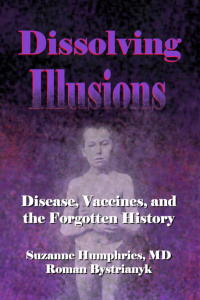
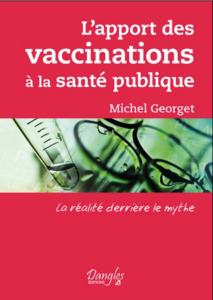



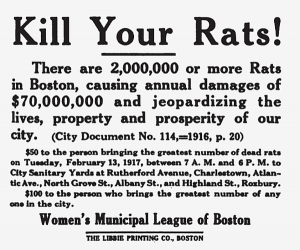
to 71 this year 46 years I have been fighting against this state lies disseminated by our “Elites” attached to the interests of pharmaceutical laboratories that finance our “good doctors” to believe the doctrine that allows to rake in billions annually destroying immunity, polluting the bodies of babies as we pollute the land and water with pesticides, insecticides, radioactivity and food additives more tobacco and alcohol. We are governed by irresponsible dangereux..et.. especially ignares..présomptueux..mais alas.. the people believe…AMEN.
Very good paper, which goes much further than the usual criticisms about the only problem builders.
But, for puerperal fever, be aware that the history of the transmission by contaminated hands defended by Semmelweis, and now by the official medicine, is completely bogus.
The supposedly caused by puerperal fever mortality was actually caused by the use of bleeding, purgatives and opiates, in other words, by the treatments themselves of this disease.
What to know about bleeding, is that until late in the 19th century, it was believed that the human body contained 25 L blood, while it owns only 5 to 7 liters (according to the weight and size of the person). Suddenly, was sampled up 3 liters of blood, what was the most deadly time.
Of course, it is not always levied 3 L, but even with 1 or L 2, it was already strongly enough to wreck the person, especially if there had been hemorrhaging during childbirth. Et puis, it was also bloodletting before delivery.
Then, the administration of opiates and purgatives were finishing the patient. Bleeding caused a hypotension. And opioids and laxatives also. Donc, if the woman in labor was already in a state of significant hypotension due to bleeding, opiates and purgatives could finish it by further increasing this hypotension.
Donc, be treated against puerperal fever was deadly mostly. This means that getting diagnose this disease amounted to die (say in 80 % cases).
Because of that, which was that there was more or less dead in a specific hospital, it was in fact the percentage of puerperal fever diagnosis.
And about Semmelweis, what one may think, is that even indirectly influenced and forced students to detect fewer cases in his experience. As he was the responsible fact clinic, if students were not going in his direction, they risked being Saqués and therefore do not have their year. Alors, they had to diagnose many fewer cases than before. And Semmelweis himself had less validate diagnoses made by students. As the symptoms were very generic, it was easy to say that it was finally a bit of a worse instead of puerperal fever.
Anyway, this story is completely illogical. Being pregnant and giving birth, it is not a disease state. And since women gave birth at the time young, they were on top of their fitness. Donc, they were perfectly healthy before and after delivery and had no immune system problem. From there, if these women developed puerperal fever, so, doctors themselves should have done. And even, anyone handling or swallowing a little spoiled meat should develop the disease even today. All this will happen and still can not. Donc, this theory of puerperal fever from cadavers is ridiculous.
For more details on the subject, see my paper on my blog :
http://www.repenser-la-medecine.com/quotidien/non-classe/semmelweis-le-fin-mot-de-laffaire/
“En effet, health expenditure (Medical and Pharmaceutical) of vaccinees were 30 % higher than those of non-vaccinated, additional costs which must be added the cost of the vaccine and all for a poor result : 14 % vaccinated presented against a flu-like illness 13 % Non-vaccinated”.
Je pense que cela s’explique par le fait qu’en règle générale, nous qui ne nous vaccinons pas ne courrons pas voir le médecin non plus si la maladie nous atteint. Je suis presque sûre d’avoir eu le H1N1 en 2009 mais comme je n’ai pas consulté – suis restée au lit une semaine avec la “pire grippe de ma vie” – je ne rentre dans aucune statistique.
Merci de cet article bien documenté. L’arrogance des médecins est en définitive un réel problème de santé publique…